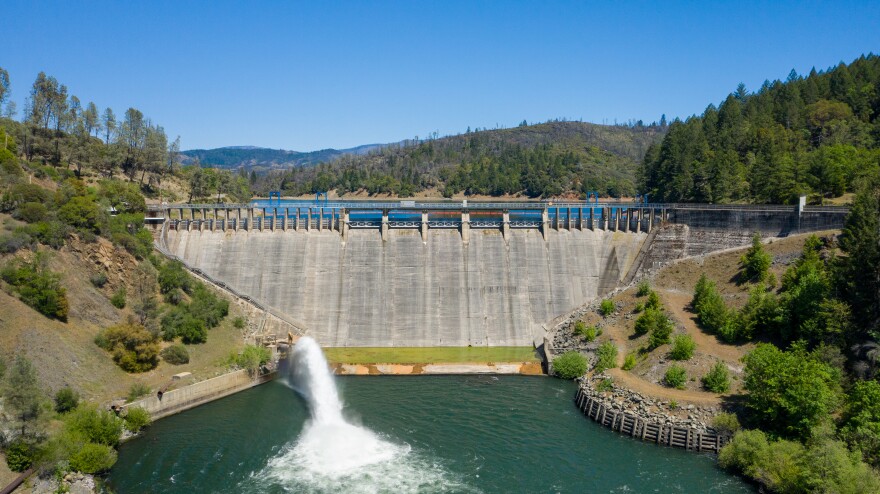The 100-year-old Potter Valley Project consists of two dams along Northern California’s Eel River.
The upstream Scott Dam blocks salmon and steelhead from reaching prime spawning grounds, according to Alicia Hamann, the director of Friends of Eel River. Both fish are threatened under the Endangered Species Act. Friends of the Eel River are one of a handful of environmental groups planning to sue PG&E to seek protections for these dwindling fish populations.
“While there are incredible opportunities that we should all be working to seize in the Eel River right now, those opportunities aren’t gonna last forever," Hamann says. "The longer we wait, the longer we’re putting this intense pressure on our salmon and steelhead to fight for survival.”
Hamann says both populations are resilient and adaptable to changing conditions, and that it's likely the fish would be able to recover if the dams are removed. That would open up access to over 250 miles of prime habitat upstream of the Scott Dam.
But without changes, it's likely the fish could never recover. A 2010 study from UC Davis estimates Chinook salmon levels in the Eel River have declined by more than 90%. Historically, over 800,000 of the fish visited the river each year. But that number dropped to around 1,000 in the 90's and 2000's.
The groups’ notice to sue comes a week after both dams licenses expired, setting the stage for their removal in the coming years.
In an email, PG&E spokesperson Deanna Contreras said the company is still operating under all environmental rules and will continue to do so until the dams are decommissioned.

But Hamann says along with the expired permit goes the company’s legal permission to harm threatened salmon and steelhead in the river.
Redgie Collins is the legal and policy director at California Trout, one of the groups involved in the lawsuit. They want to expedite the dam removal timeline.
“We’ve given all the tools to PG&E and all they need to do is remove these dams," he says. "[If] they do that quickly enough this litigation will easily fall off the table because they’re finally doing what we think they’re required to do, both under federal and state law. We’re here to push PG&E every way we can.”
Collins says the century old dams barely generate electricity and cost PG&E millions in repair costs every year.
Fisherman in the region also support the dam removal. Glen Spain with the Institute for Fisheries Resources says such low numbers of salmon and steelhead coming from the Eel River means coastal fisherman are forced to avoid the area entirely, even if there are plenty of stable fish populations intermingling nearby.
The groups believe removal of the dams is possible within five to seven years if PG&E is cooperative and willing to work quickly.



